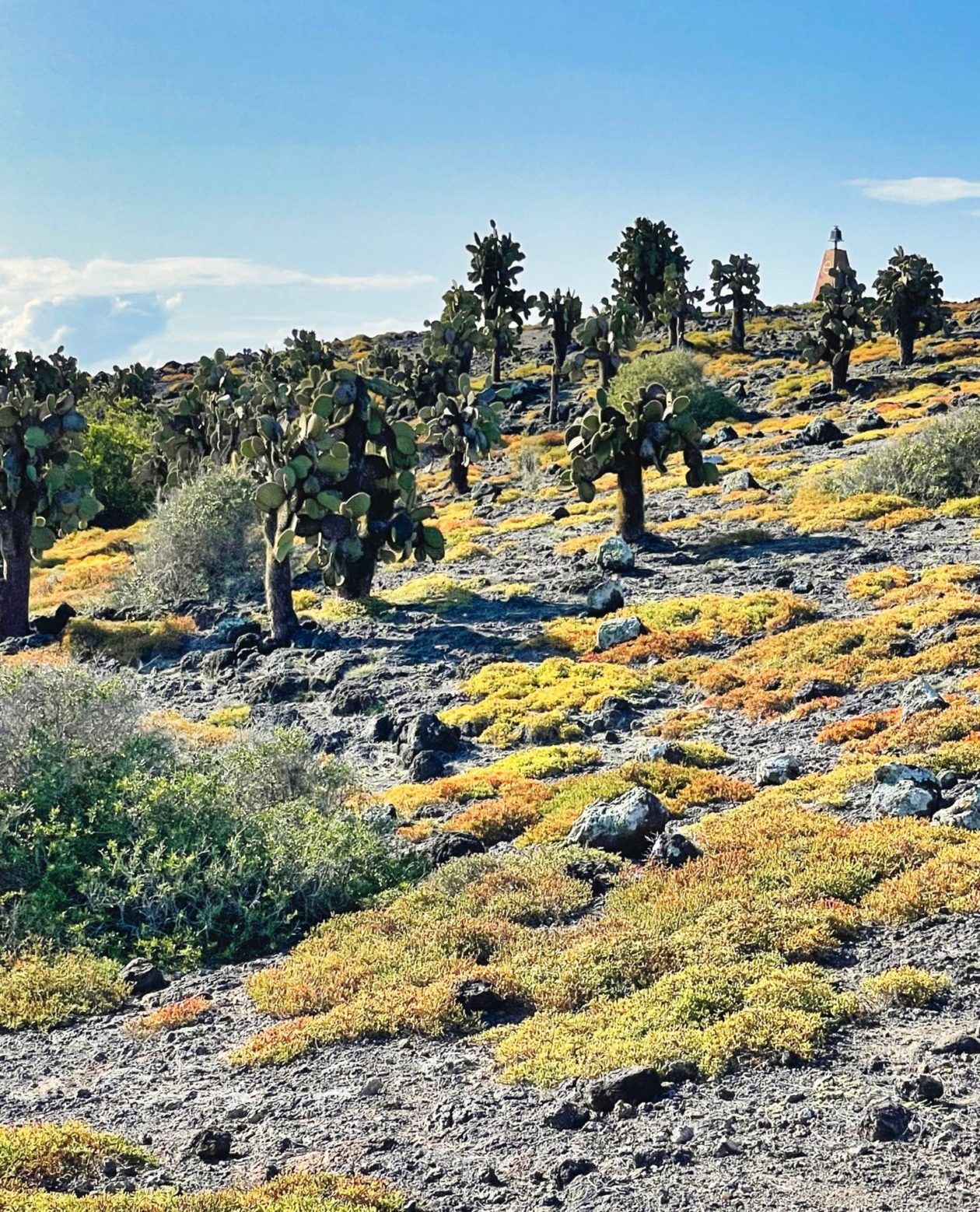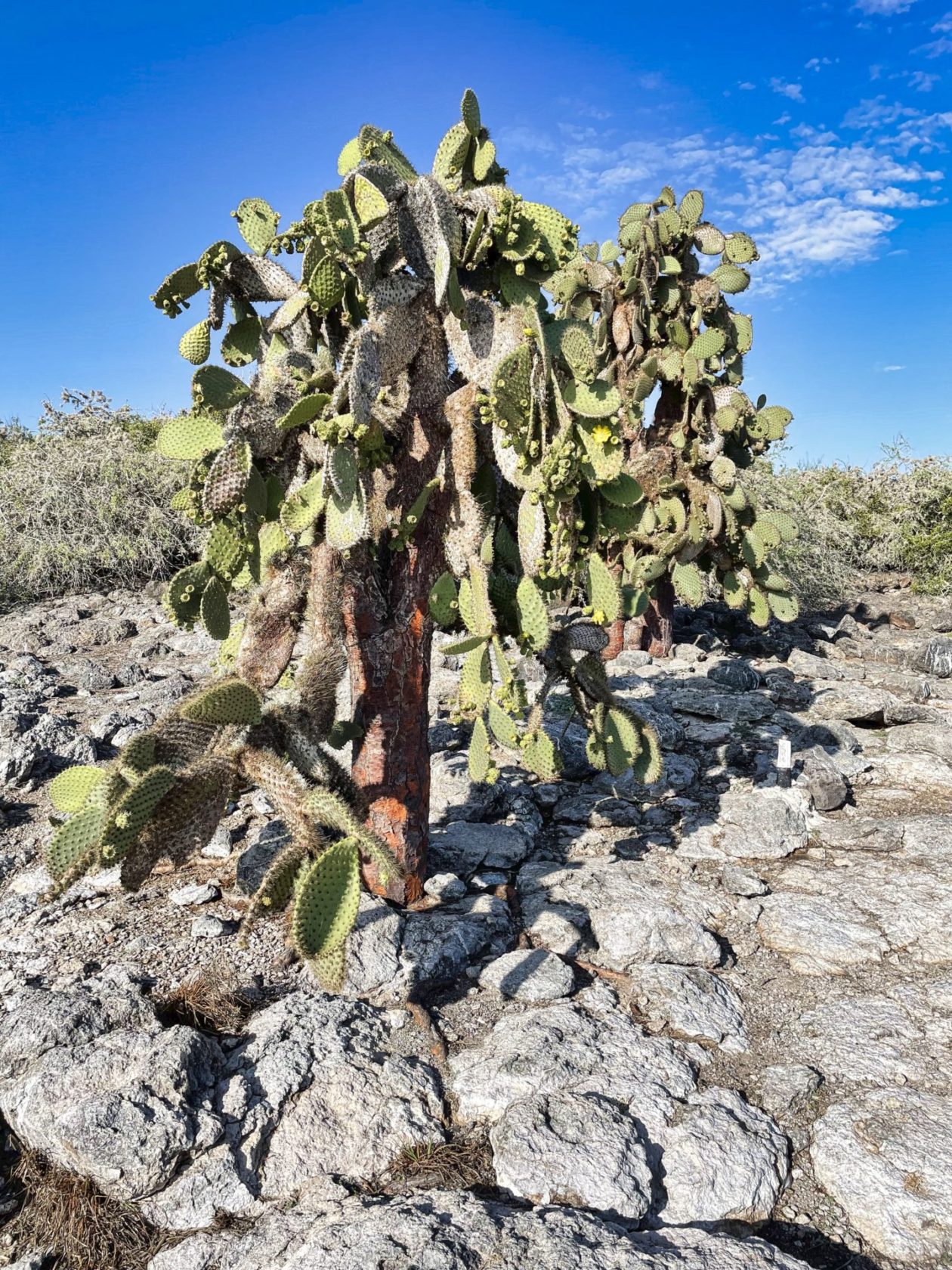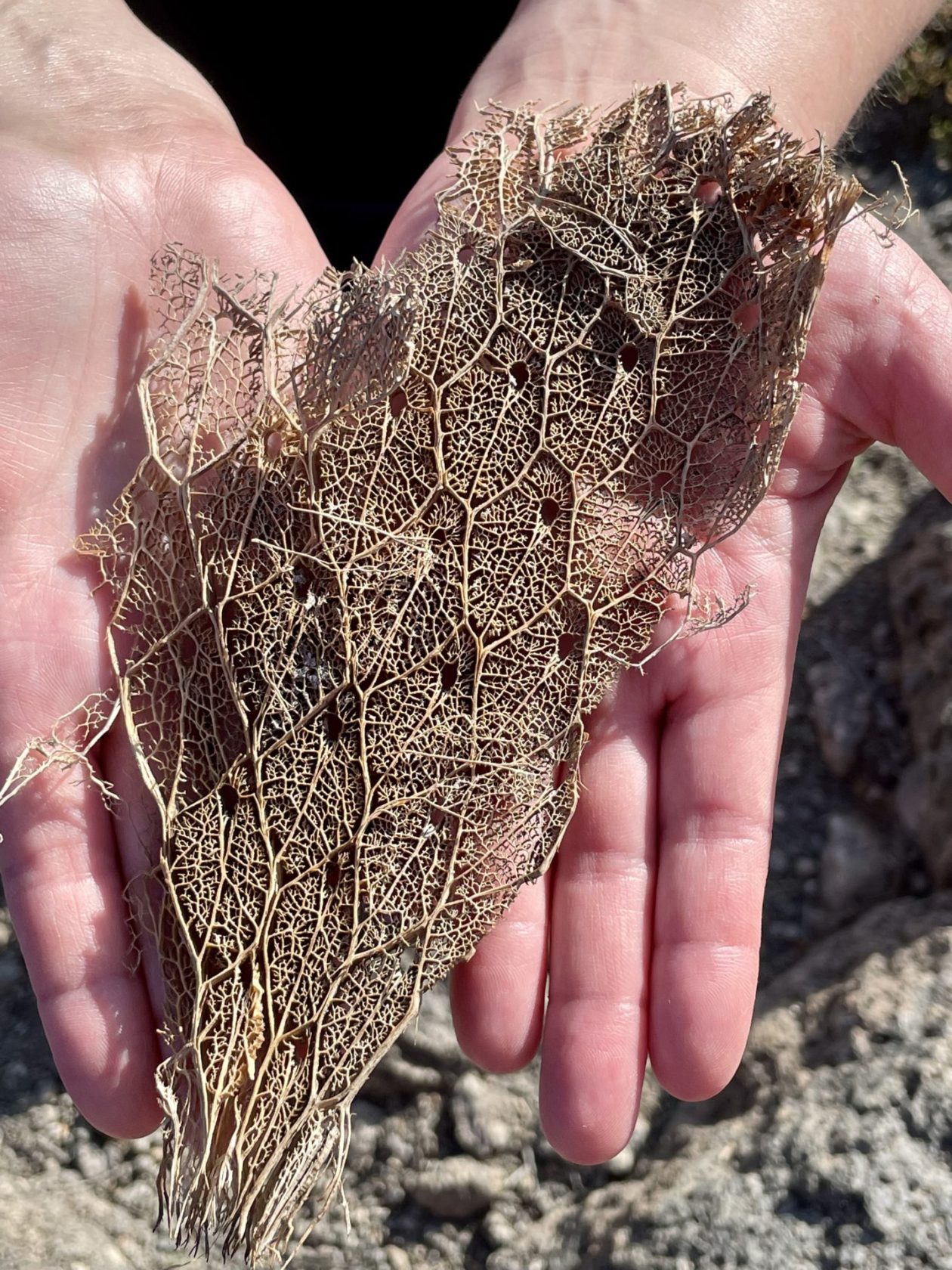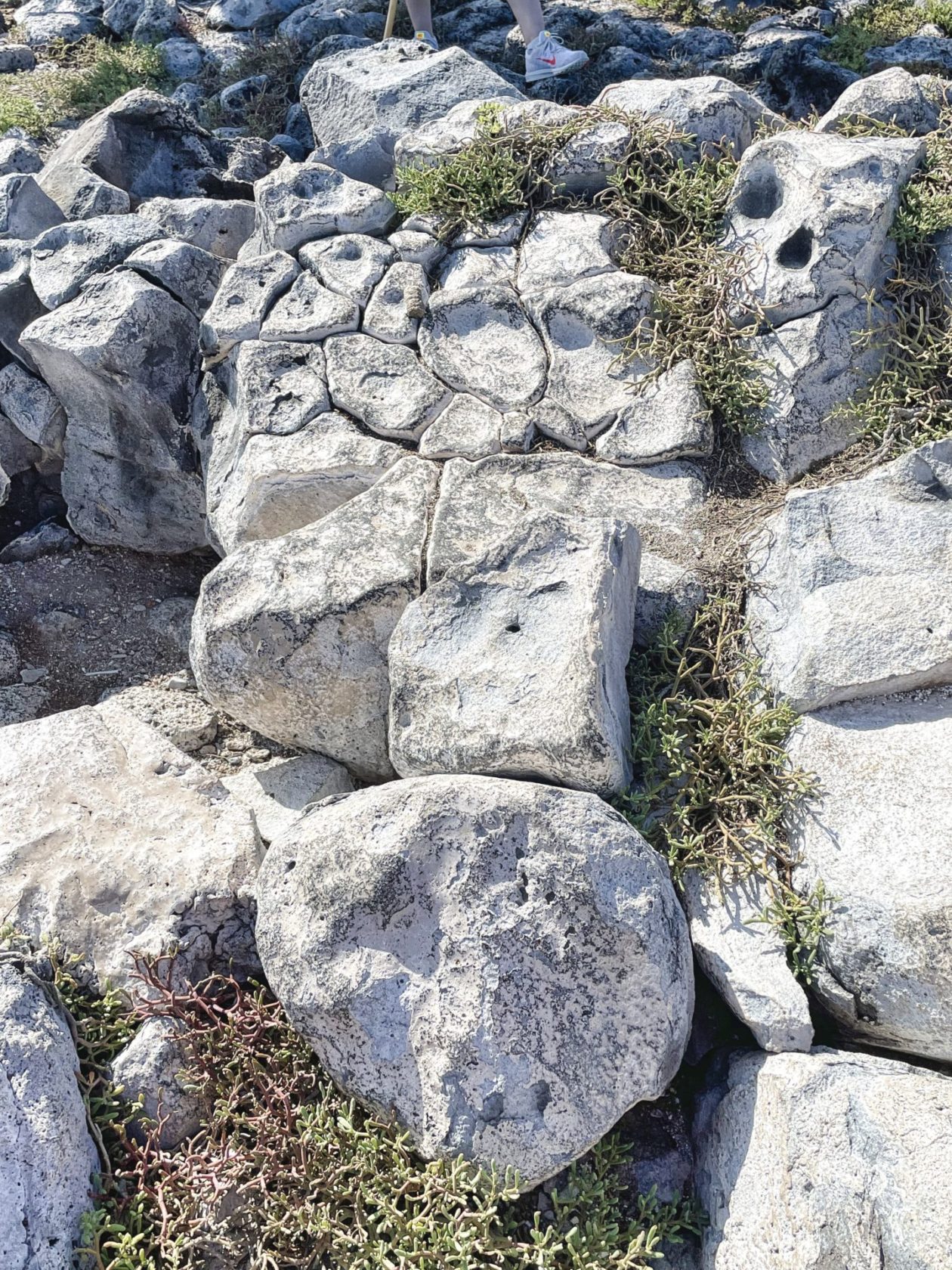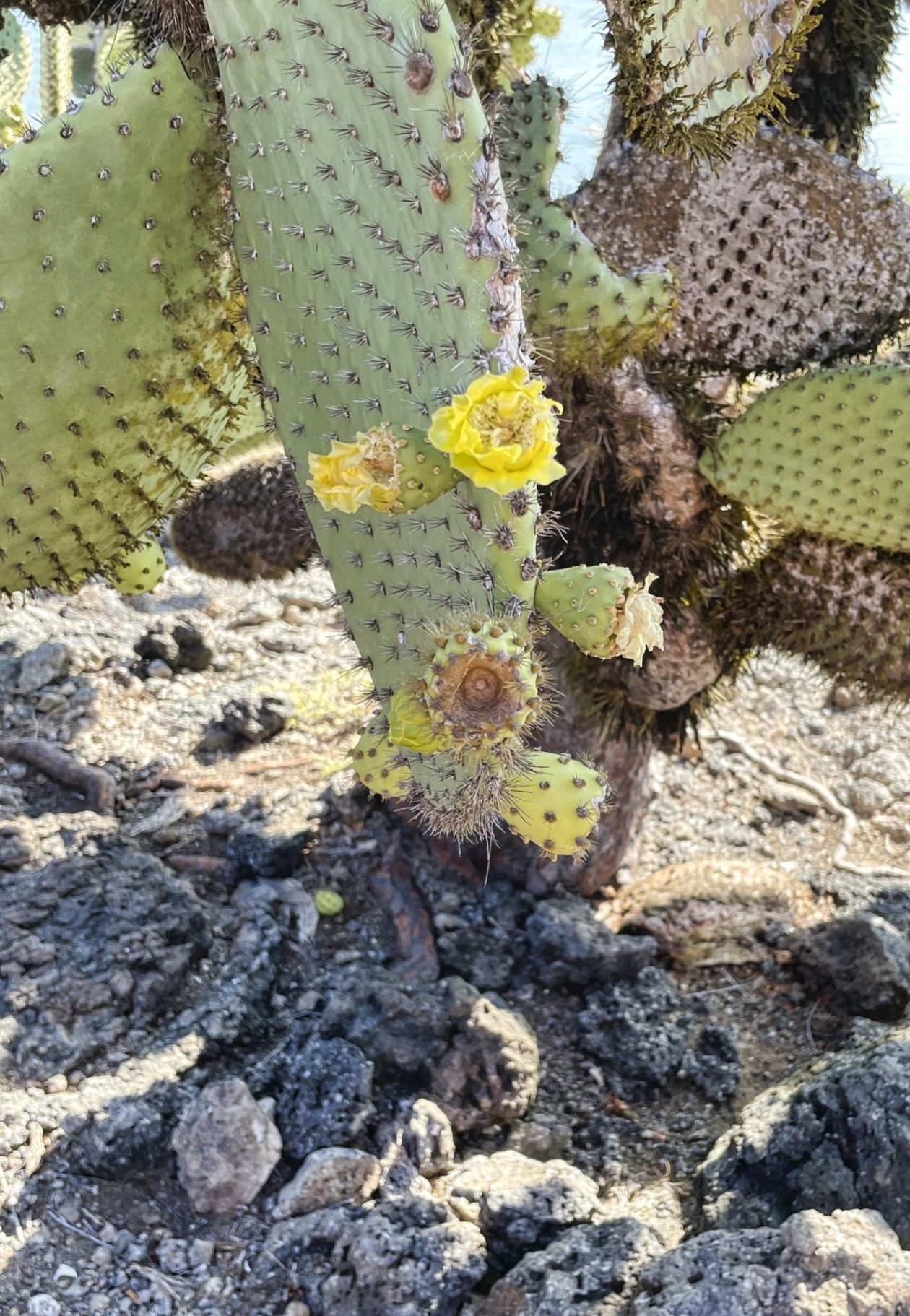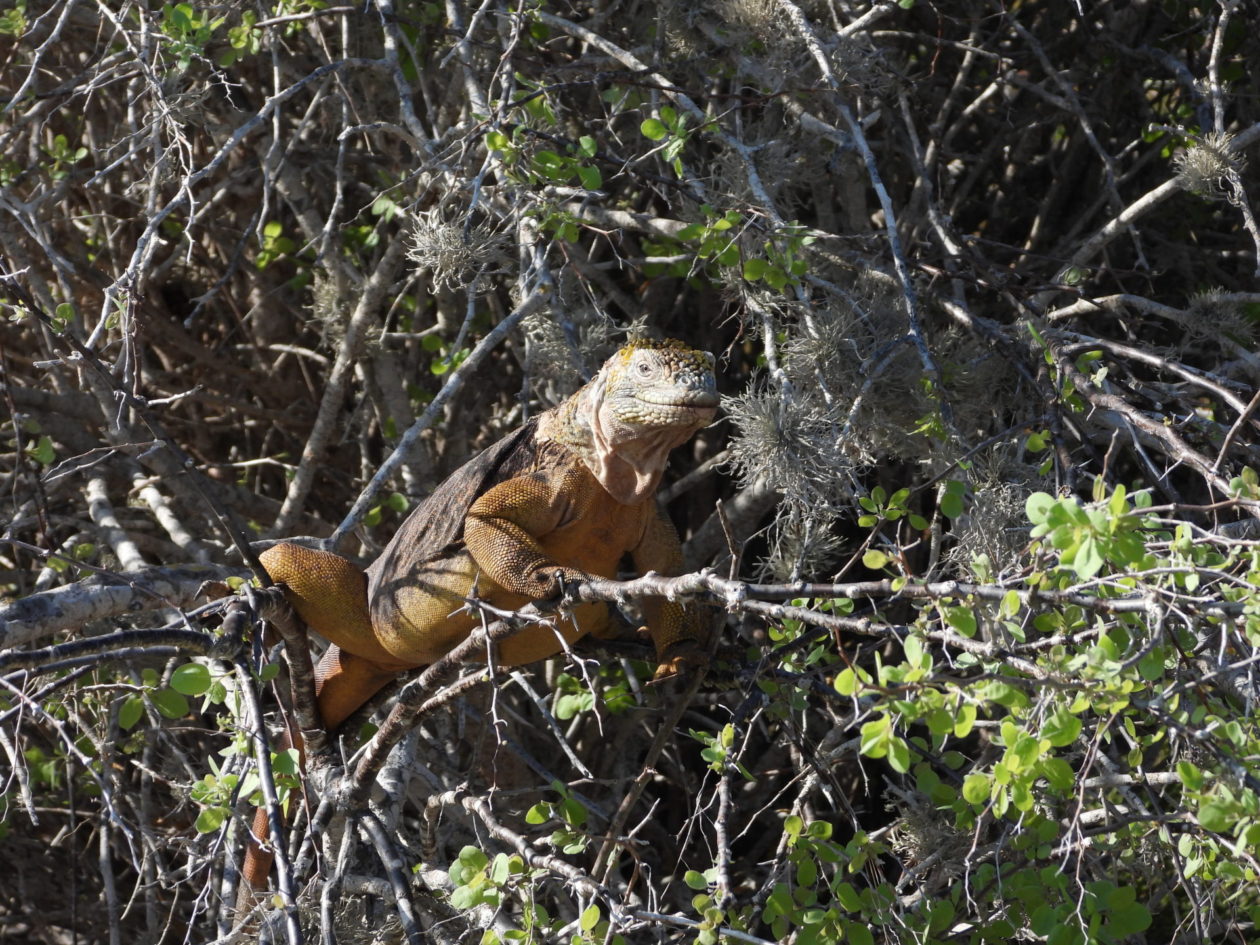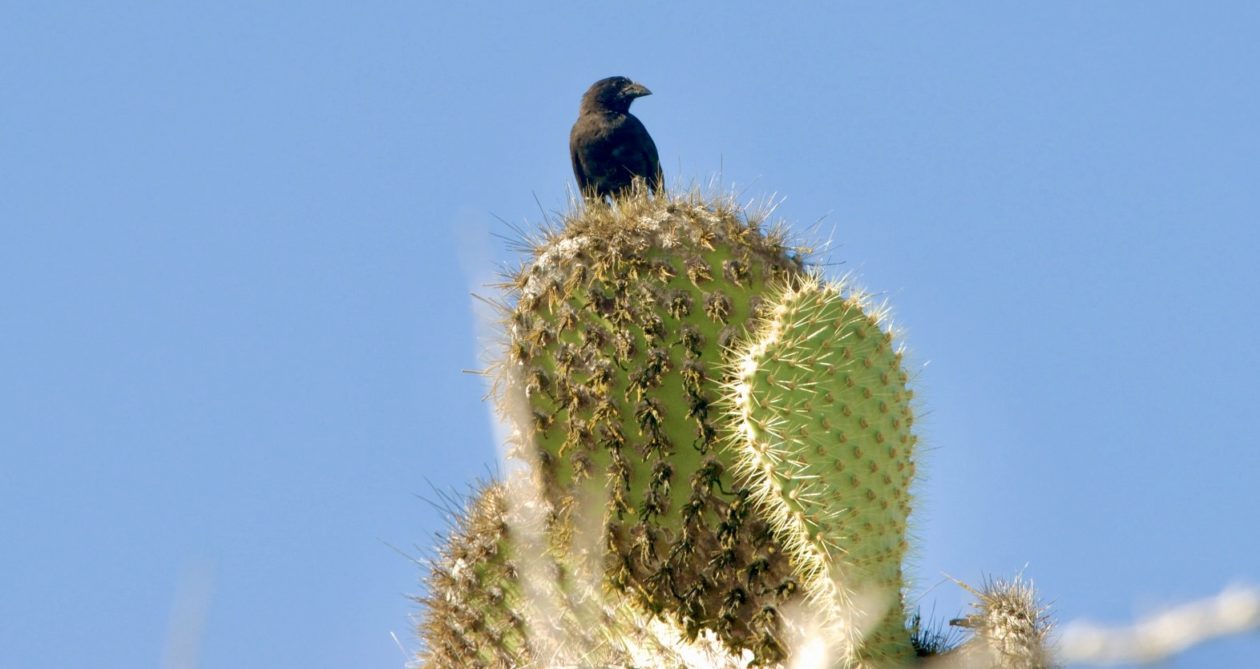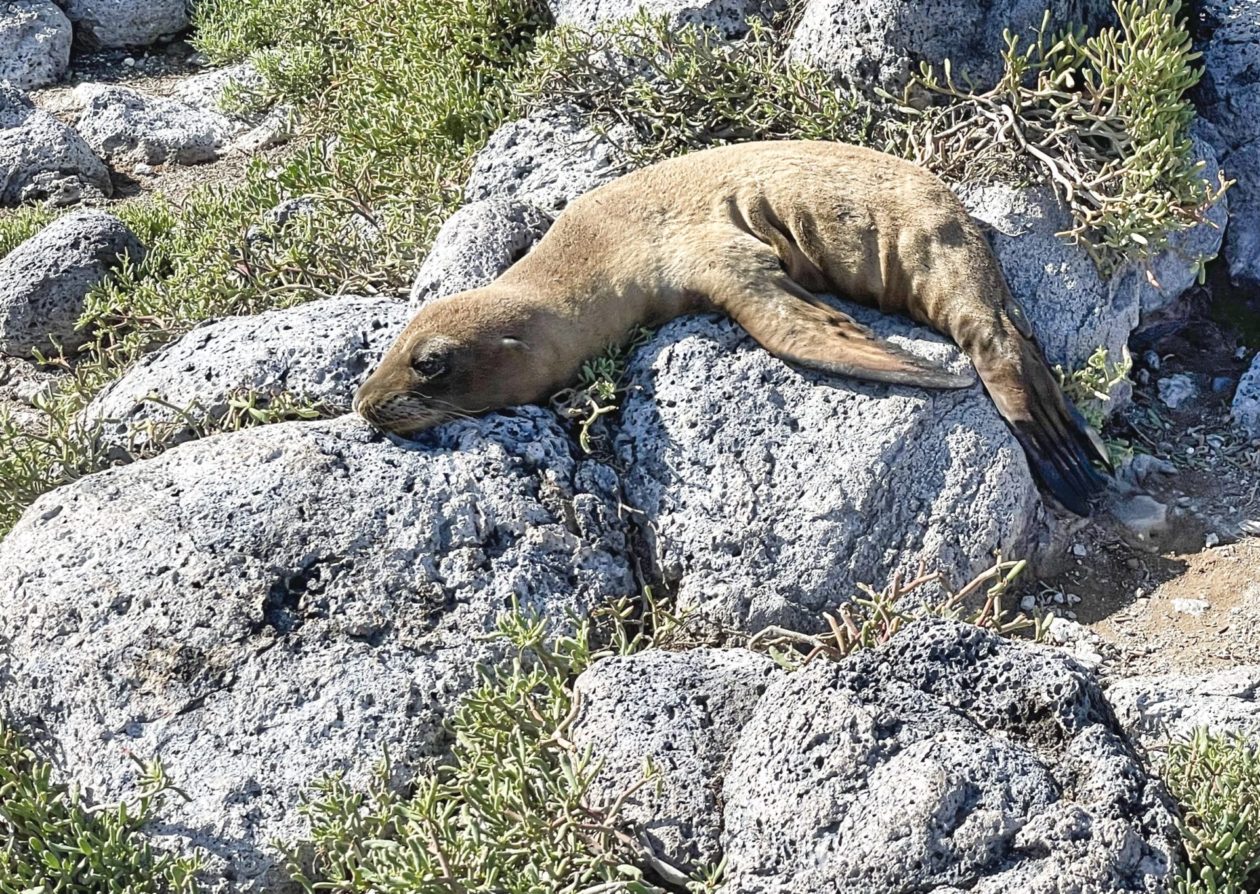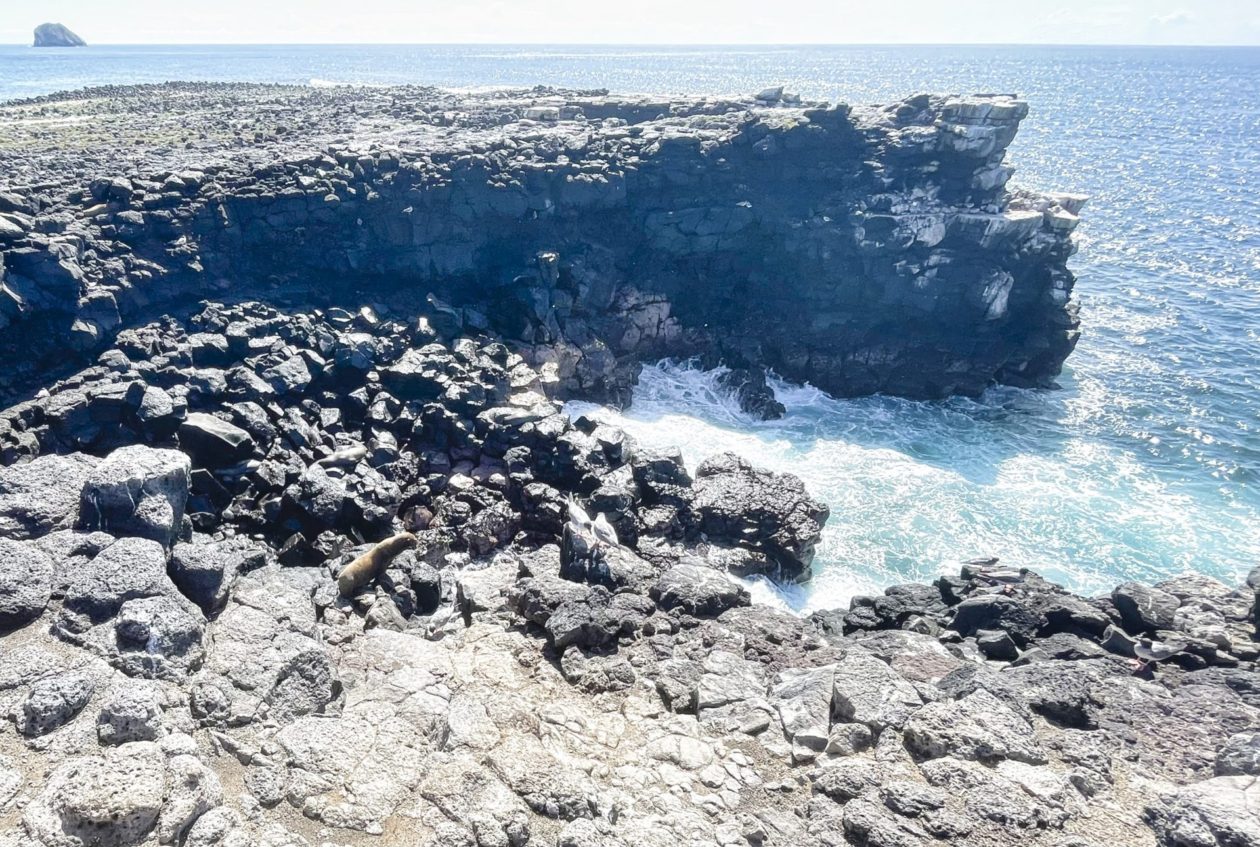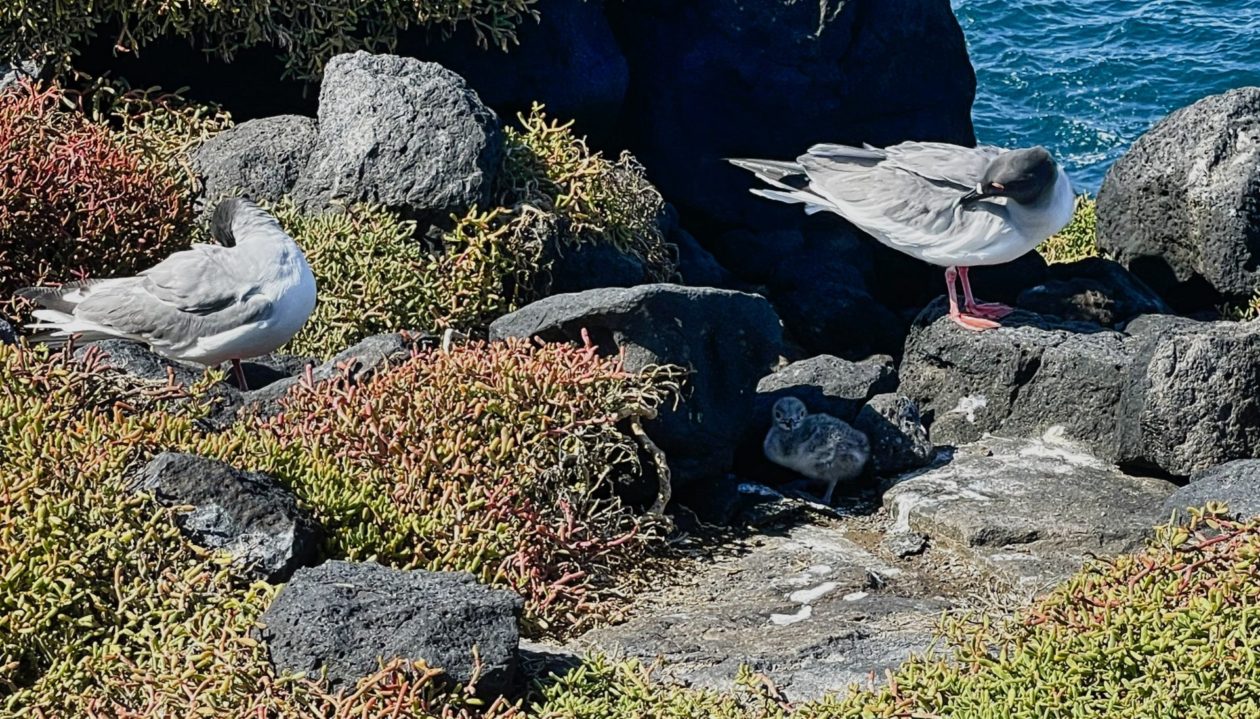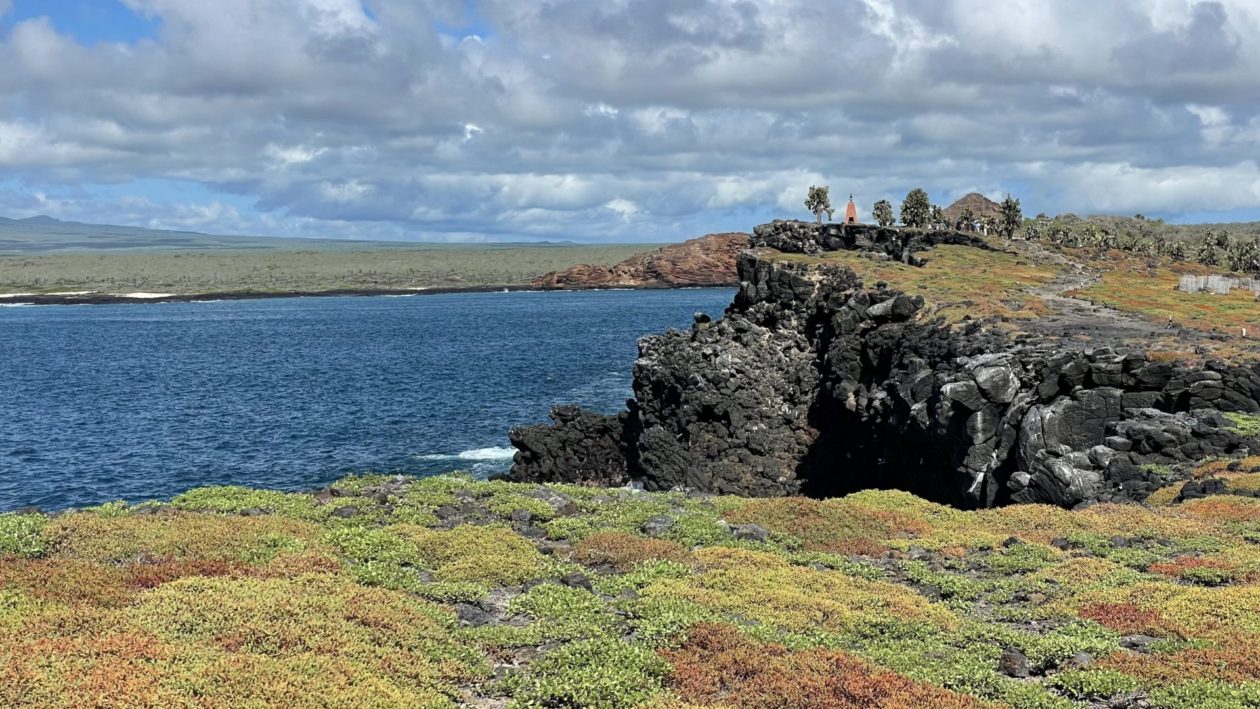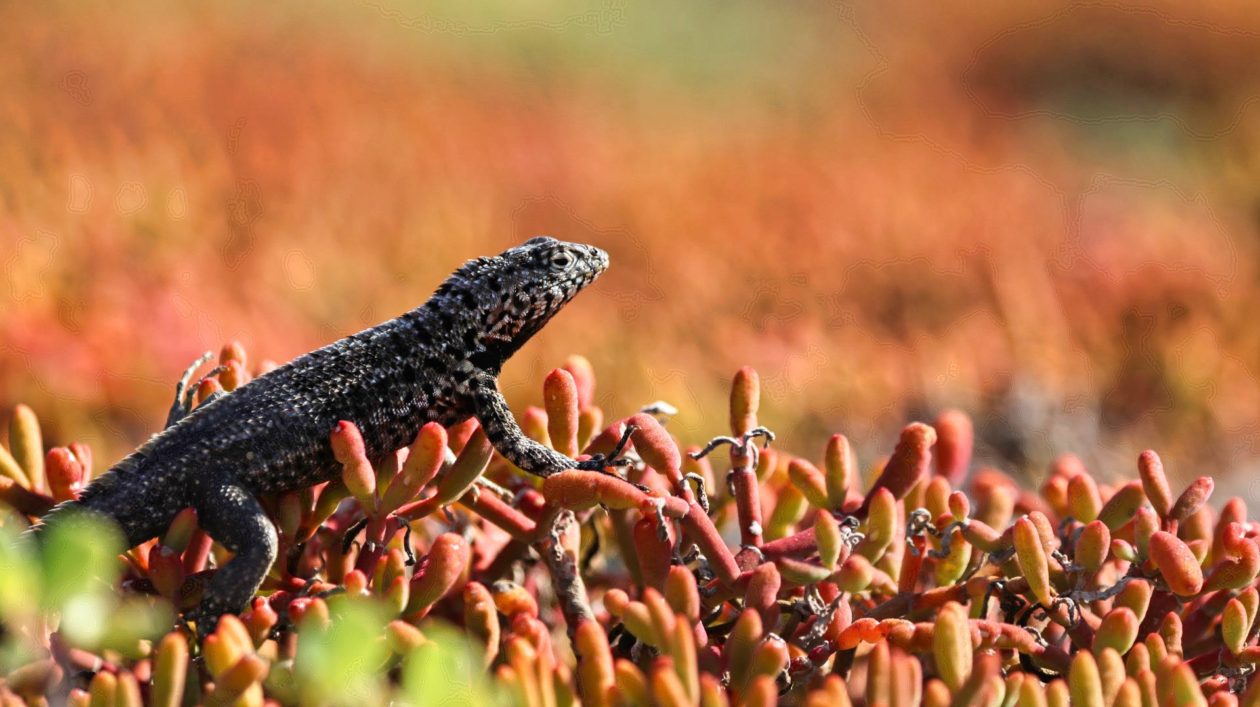- Start of trip and Quito
- Flight to Baltra and underway — our Galapagos adventure begins!
- Española Island, Galapagos Islands
- Floreana Island, Galápagos Islands
- Isabela Island, Galápagos Islands
- South Plaza Island, Galápagos Islands
- Santa Cruz Island, Galápagos Islands
- A quick stop in Lima, Peru
- Ollantaytambo, Peru
- Machu Picchu — we finally got here!
- Back to Cusco, Peru
- Back to Lima and end of trip
Today, we went to South Plaza, one of two islands that broke away from the large island of Santa Cruz. Both the islands were formed by geological uplift and tilt to the north, with cliffs on their southern coasts. We even saw some exposed coral that used to be submerged. Despite its small size to a large number of species including sea lions, land iguanas, marine iguanas and cliffs full of nesting birds including Swallow-tailed Gulls, Red-billed Tropicbirds, Audobon’s Shearwaters, Nazca Boobies and many others. One interesting thing about the iguanas here is that, with a male marine iguana and a female land iguana, they can actually produce viable young that have some elements of both. The actual scientific name for these is “weirdos” and they are all sterile. I guess you can’t mess with Mother Nature. Anyway, we hiked around the island, which is covered with “Sesuvium,” a succulent plant that looks a lot like ice plant. It is green in the wet season, but red in the dry season (it’s more or less dormant there). Another shocker were the giant prickly pear cactus. The trunk looks like many other trees (minus all the spines) but, in reality, the insides are a web of fibers and capillaries that store water for long periods of time. Beneath one of these cactuses, there was a female land iguana that was munching on a cactus paddle. They are generally yellow with brown spots and the more yellow they are, the more healthy the are (I believe their “yellowness” comes from eating a lot of prickly pear flowers and fruit). Another thing that was quite odd was the large number of shiny (almost sparkling) white rocks that looked like marble and contrasted with the rest of the black volcanic rock. It turns out that this is actually sea lion poop that has been polished by large numbers of sea lions that rub their bodies on it as they move across the rocks! Hmmm. As we continued around the island, we came across the sea lion bachelor colony (all the males that aren’t alpha and don’t have a harem) and it kind of smelled like a bachelor pad. This is also nesting season and we saw many new hatchlings (especially Nazca Boobies) that were very cool to see. Anyway, it was a beautiful walk! We were supposed to go on a hike to Dragon Hill this afternoon to see lots of land iguanas (seen them), flamingos (seen them) and lagoons (seen them). I know that sounds a little cold, but we have been pushing pretty hard and we needed a rest — and to give our olfactory senses a bit of a break! Tomorrow we head to Santa Cruz Island to do a community project planting trees on the island!
